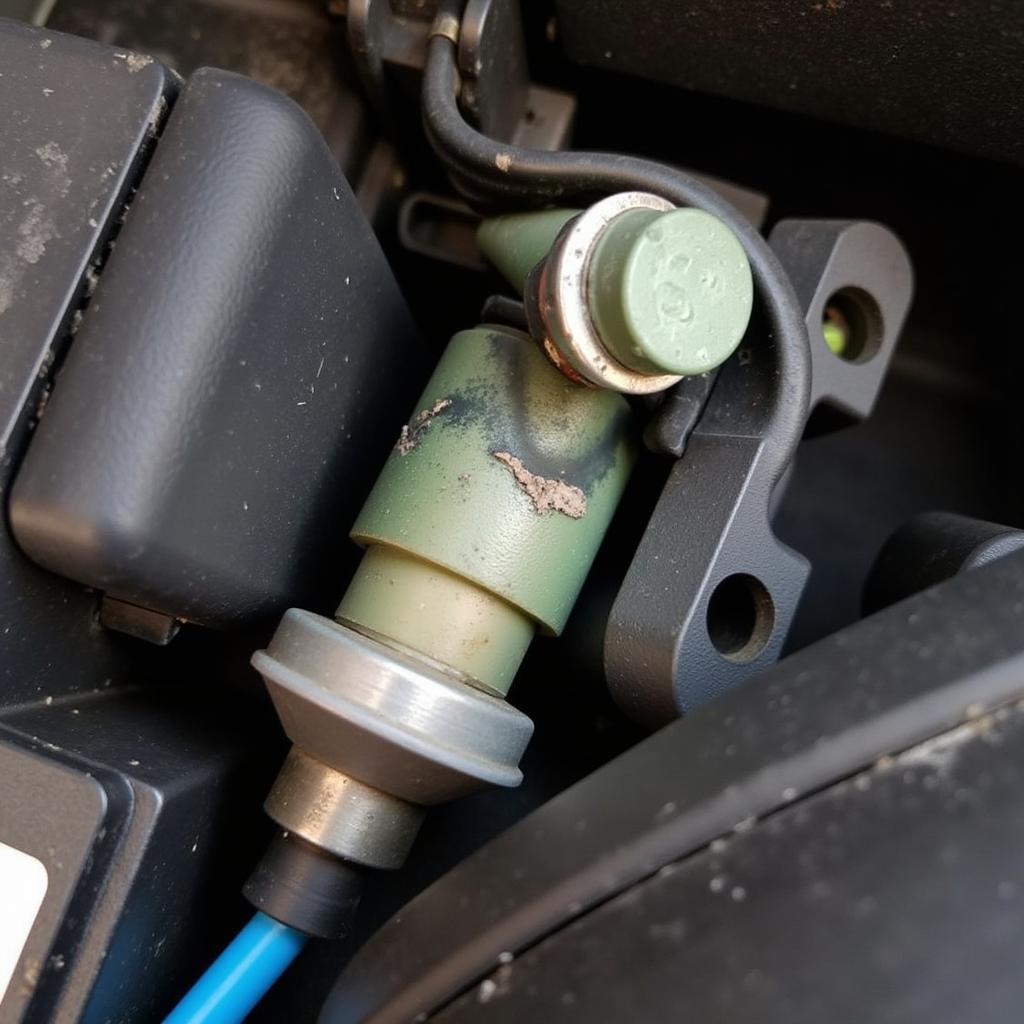A sudden illumination on your Seat Leon’s dashboard can be a cause for concern. Whether it’s a cryptic symbol or a flashing warning light, understanding these indicators is crucial for your safety and the well-being of your vehicle. This guide delves into the common warning lights found in a 2011 Seat Leon, offering insights into their meaning and potential solutions.
Common Seat Leon 2011 Warning Lights Explained
Your Seat Leon utilizes various warning lights to communicate potential issues. Let’s decode some of the most frequent ones:
Engine Management Light
Appearance: This light typically resembles an engine block or has the letters “EPC.”
Meaning: The engine management light signals a problem with the engine control unit (ECU) or related components. This could range from minor issues like a faulty oxygen sensor to more serious problems like misfires or a malfunctioning catalytic converter.
What to do: If the light is steady, it’s generally safe to drive for a short period but schedule a diagnostic check soon. A flashing light indicates a severe issue requiring immediate attention.
Electronic Power Control (EPC) Light
Appearance: The EPC light is usually yellow and displays “EPC.”
Meaning: This light signifies an issue within the electronic throttle control system, which manages fuel-air mixture and acceleration. Problems can range from a faulty throttle position sensor to a complete system failure.
What to do: Similar to the engine management light, a steady EPC light necessitates a prompt diagnostic check, while a flashing light demands immediate attention from a qualified mechanic.
Anti-lock Braking System (ABS) Light
Appearance: This light typically shows “ABS” within a circle.
Meaning: The ABS light illuminates when the anti-lock braking system encounters a problem. This system prevents wheel lockup during hard braking, ensuring stability and control.
What to do: A lit ABS light means your ABS is disabled. While you can still brake normally, seek professional diagnosis and repair to restore this crucial safety feature.
Electronic Stability Program (ESP) Light
Appearance: The ESP light usually depicts a car with skid marks.
Meaning: This light indicates a problem with the Electronic Stability Program, which helps maintain vehicle control during slippery conditions or sharp turns.
What to do: Similar to the ABS light, a lit ESP light suggests the system is inactive. Exercise caution, especially on wet or icy roads, and have a mechanic inspect the system promptly.
Tire Pressure Monitoring System (TPMS) Light
Appearance: The TPMS light resembles a tire cross-section with an exclamation mark.
Meaning: This light signals a potential issue with tire pressure, indicating that one or more tires may be significantly under-inflated.
What to do: Check your tire pressure at your earliest convenience and inflate them to the recommended levels. If the light persists, it may indicate a TPMS sensor malfunction requiring professional attention.
Remote Diagnostics and Software Solutions: A Modern Approach
“In today’s automotive landscape, remote diagnostics and software solutions are revolutionizing car repair,” says automotive electronics expert, David Miller. “By remotely accessing a vehicle’s onboard computer, we can often diagnose and even resolve issues without the need for a physical visit to the workshop.”
This technology proves particularly beneficial for software-related problems, which are becoming increasingly common in modern vehicles like the Seat Leon. From resetting warning lights triggered by minor glitches to performing software updates that enhance vehicle performance, remote solutions offer a convenient and efficient approach to car maintenance.
Addressing Common Questions About Seat Leon Warning Lights
Here are answers to some frequently asked questions:
Q1: Can I continue driving with a warning light on?
A: It depends on the light. While some lights signal minor issues, others indicate serious problems that require immediate attention. Refer to your owner’s manual and err on the side of caution by seeking professional advice.
Q2: How often should I have my Seat Leon’s warning lights checked?
A: Ideally, any illuminated warning light should be inspected promptly. Regular vehicle servicing, as per the manufacturer’s recommendations, can help identify potential issues before they escalate.
Q3: Are remote diagnostics and software solutions effective?
A: “Remote solutions can effectively diagnose and resolve a significant percentage of car problems, particularly those related to software or electronic systems,” explains Miller. “However, certain mechanical issues may still require hands-on inspection and repair.”
Q4: How can I find a reliable mechanic specializing in Seat vehicles?
A: Seek recommendations from trusted sources, check online reviews, and look for certifications or affiliations with reputable automotive organizations. Contacting a Seat dealership can also provide a list of authorized service centers.
Taking Control: Ensuring Your Seat Leon’s Well-being
Understanding your Seat Leon’s warning lights empowers you to address potential issues promptly and effectively. While this guide provides a starting point, always refer to your owner’s manual for specific information about your vehicle model. Remember, regular maintenance and timely attention to warning signs are key to enjoying a safe and enjoyable driving experience.

